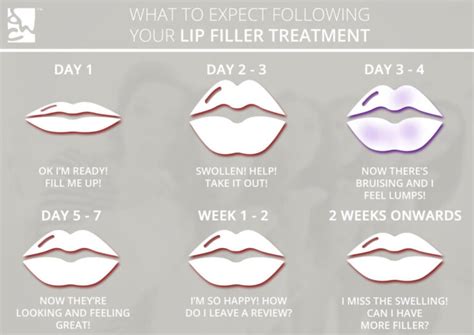Your Filler Settlement Timeline: A Week-by-Week Breakdown
Dermal fillers offer a non-surgical way to rejuvenate your appearance, addressing wrinkles, adding volume, and enhancing facial contours. However, understanding the timeline for filler settlement is crucial for managing expectations and achieving optimal results. This week-by-week breakdown will guide you through the process, addressing common questions and concerns.
What Happens Immediately After Filler Injection?
Immediately following your filler treatment, you might experience some mild swelling, redness, bruising, or tenderness at the injection site. This is completely normal and typically subsides within a few days. Ice packs can help minimize swelling and discomfort.
Week 1: Initial Swelling and Bruising
During the first week, the most noticeable changes will be swelling and potential bruising. These are inflammatory responses to the injection and will gradually decrease. Avoid strenuous activities and alcohol consumption to minimize further swelling.
What can I expect in the first week?
You'll likely see some initial improvement in the treated area, but the full effect won't be apparent yet. The filler will still be settling, and any initial swelling or bruising will be at its peak. This is perfectly normal, and patience is key. Remember to follow your practitioner's aftercare instructions meticulously.
Week 2: Swelling Subsides, Subtle Improvement
By week two, the swelling should have significantly reduced. You'll start to see a more natural-looking improvement in the treated area. The filler continues to integrate with your tissues, and the results become more refined.
How long does it take for filler to completely settle?
While significant improvement is visible by week two, complete settlement can take up to two weeks, and in some cases, even longer. This is because the filler needs time to integrate naturally within your body.
Week 3-4: Optimal Results Begin to Appear
During weeks three and four, the filler will have largely settled. You'll now see the most noticeable and natural-looking results. The final outcome should be a smoother, more youthful appearance, with any swelling or irregularities completely resolved.
What if I'm not happy with the results after four weeks?
If you're unhappy with the results after four weeks, schedule a follow-up appointment with your injector. They can assess your concerns and discuss potential adjustments or solutions. Remember, open communication is key to achieving your desired outcome.
Weeks 5 and Beyond: Long-Term Results and Maintenance
After the initial four weeks, you should enjoy the long-term benefits of your filler treatment. The duration of the results varies depending on the type of filler used, the treatment area, and individual metabolism. Regular maintenance treatments may be recommended to maintain your desired look.
How long do the results of filler injections last?
The longevity of filler results varies significantly depending on the type of filler and individual factors. Some fillers can last for several months, while others may last for a year or longer. Your practitioner can advise on the expected duration for the filler they used on you.
Understanding Filler Migration
While rare, filler migration is a possibility. This occurs when the filler moves from its initial injection site. This is often due to incorrect injection technique or individual factors. If you suspect filler migration, consult your practitioner immediately for assessment and potential correction.
What are the signs of filler migration?
Signs of filler migration can include asymmetry, lumps, or bumps in unexpected areas. If you notice any of these signs, contact your practitioner as soon as possible.
This week-by-week guide provides a general timeline for filler settlement. Individual experiences may vary, and it's crucial to follow your practitioner's post-treatment instructions carefully. Remember that patience is key, and the final results will be worth the wait. Always choose a qualified and experienced injector to ensure the best possible outcome and minimize potential complications.

